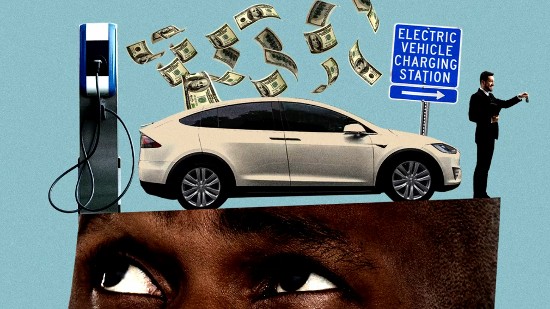The transportation sector here in Canada is second only to the fossil fuel industry in producing carbon emissions. In the United States, transportation comes first. Electrifying transportation should be about cutting carbon emissions but consumer behaviour and choice make moving in that direction more difficult.
For the average Canadian or American who is looking to buy or lease a new vehicle, the allure of electric vehicles (EVs) is there. I confess that I drive a hybrid because the place where I lived in Toronto (a condominium) had no intention of putting in charging stations. Hybrids cost more than pure internal combustion engine (ICE) powered vehicles. The price is comparable to many EV models today. But the impracticality of searching for a public charging station made choosing an EV unfeasible for me. When my current lease ends, in our new apartment where there are dedicated spots with charge ports, as well as a public charge station, I will have a choice, stick with a hybrid or lease an EV.
Ask the question on Google, “Why do consumers choose an EV over other vehicles?” and you get two very different answers.
- To reduce the environmental impact of driving where EVs produce far less carbon emissions (zero emissions if the electricity comes from renewable sources).
- To reduce operational costs because recharging is cheaper than gasoline or diesel fuel.
The downside of EVs include:
- Generally EVs cost more even with government incentive subsidies.
- A home charge station is a must which adds to the cost.
- There is a perceived range limit challenge, particularly in earlier EV models.
- Battery discharge rates are impacted by different weather and driving conditions. (i.e., Colder climates drain batteries faster.)
- Today’s fast chargers take up to 20 minutes to get an EV charged to 80%. Compare that to about five minutes when filling the average gas or diesel tank.
- Finding public charge stations today for long-distance commutes requires planning.
That’s why when I read in today’s Washington Post, Michael J. Coren’s climate advice column, I was intrigued. He asks “Is it cheaper to refuel your EV battery or gas tank?” The answer it turns out is what most of us would expect:
Operating an EV versus a gas or diesel-burning internal combustion engine vehicle is cheaper with few exceptions.
But what I found most interesting at the very end of Coren’s article was the following which I quote:
“Every gallon of gas adds about 20 pounds of carbon dioxide to the atmosphere, equivalent to about 50 cents in climate damage per gallon, researchers estimate. Accounting for external factors such as congestion, accidents and air pollution, according to one 2007 estimate by Resources for the Future, the damage bill is closer to $3 per gallon.”
Coren notes that a conventional Ford F-150 truck, one of the biggest new car sellers in North America) spews five times more greenhouse gas (GHG) emissions into the atmosphere than the new F-150 Lightning EV.
Arguing the cost per kilowatt versus the cost per gallon does nothing to avert global warming. How can anyone this summer ignore the need for electrification of transportation in light of this last July being the warmest month since record-keeping began? The cost to humanity of an inhospitable future cannot be ignored.
















